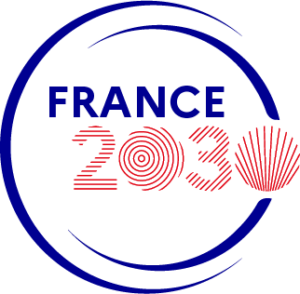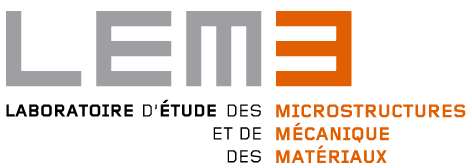- Salle de réunion du 1e étage, LEM3 – site principal, 7 rue Félix Savart, 57070 Metz
Under the aegis of the Medicis programme



Resume
Crystal plasticity (CP) models are increasingly used in scale-bridging applications to obtain microstructure-sensitive mechanical response of polycrystalline materials. These models require a proper consideration of the single crystal deformation mechanisms, a representative description of the microstructure, and an appropriate scheme to connect the microstates with the macroscopic response. Fast Fourier Transform (FFT)-based methods, originally proposed by Moulinec and Suquet at the turn of the century for composites [1] and extended to polycrystals [2] (the most recent formulation, including non-local large-strain elasto-viscoplasticity reported in [3]) are attractive due their higher efficiency compared with CP-Finite Elements, and their direct use of voxelized microstructural images. In this talk, we will report recent progress on FFT-based polycrystal plasticity, with emphasis in novel implementations, including thermo-elasto-visco-plasticity, strain-gradient plasticity, creep, thermal conductivity, and dynamic effects. We will show applications of these methods to: micromechanics of nano-metallic laminates, multiscale coupling with a Lagrangian hydrocode, creep of steels, integration with 3-D characterization methods, and use for training and validation of machine-learning methods.
[1] Moulinec, H., Suquet, P., A numerical method for computing the overall response of nonlinear composites with complex microstructure. CMAME 157, 69, (1998).
[2] Lebensohn, R.A., N-site modelling of a 3D viscoplastic polycrystal using Fast Fourier Transform. Acta Mater. 49, 2723 (2001).
[3] Zecevic M., Lebensohn R.A., Capolungo L., Non-local large-strain FFT-based formulation and its application to interface-dominated plasticity of nano-metallic laminates. JMPS 173, 105187 (2023).
About the speaker
Ricardo Lebensohn is an expert in structure / property relationship of materials and crystal plasticity modelling. His pioneer contributions include the main-field viscoplastic selfconsistent (VPSC) formulation and associated code, a homogenization-based simulation tool for the prediction of mechanical response and microstructure evolution of polycrystalline metals, minerals and polymers. He also developed the specialization to polycrystals of the full-field Fast Fourier Transform (FFT)-based formulation and associated codes. FFT-based formulations are ideally suited for micromechanical simulations with direct input from microstructural images, e.g. collected by emerging 3-D characterization methods in Experimental Mechanics.
Dr. Lebensohn has extensive experience in the following fields, applications and techniques: Mechanics of Materials, Computational Mechanics; Solid Mechanics; Micromechanics; Polycrystal Plasticity; Dilatational Plasticity; Strain-Gradient Plasticity; Homogenization; Spectral Methods; Multiscale Material Modelling; Texture, Anisotropy, Microstructure and Damage Evolution of Metals, Minerals and Polymers; X-Ray and Neutron Diffraction; Residual Stresses; Finite Element Analysis; Metal Forming; Dynamic Properties of Materials.
To attend on teams
It is also possible to attend the seminar on Microsoft Teams.





